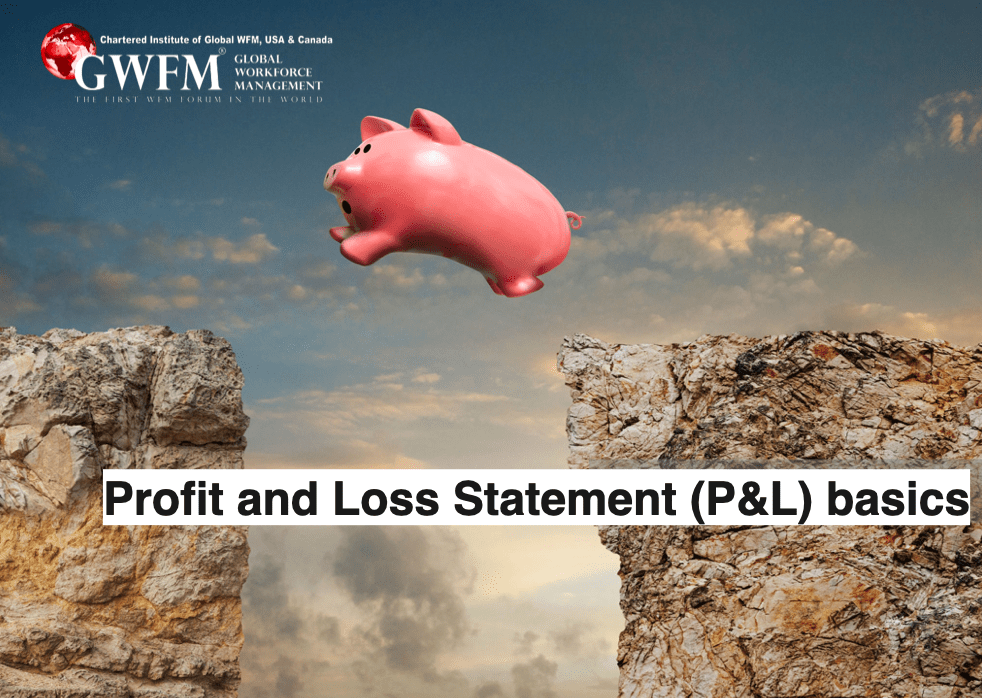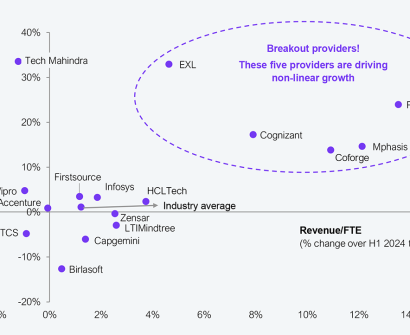Currently Empty: $0
Profit and Loss Statement (P&L) basics for Contact Center Leaders ( PART 1)

Note that the narrative is fundamentally related to Business Process Outsourcing (BPO) companies nevertheless the overall concepts can be also applied to other industries as the main concept is the same.
P&L is need for the hour to know how it works,
The purpose of this article is to provide a basic understanding to new Leaders or any Manager preparing to take that next step in their career.
On the first part, I will discuss Revenue or Income generating components, Cost and Gross Margin Fundamentals. On the second part, I will share additional items within the P&L statement calculation. On the third part I will cover the importance of incorporating WFM tools and techniques to drive and exceed your financial targets.
First and foremost, a Profit and Loss statement (P&L), income statement or statement of operations, is a financial report that provides a summary of a company’s revenues, expenses, and profits/losses over a given period.
The goal of a P&L report is to measure the profits by excluding the expenses from the income and provide an overview of the Financial Health of the Business.
Profit and Loss ( P&L) Management :
As this topic is mainly focus for BPO Operations I will talk about Profit and Loss ( P&L) Management which is usually associated with Outsourcer Contact Centers, this topic is critical for Senior Leaders as it’s a direct indicator of the profitability and success of your business, while on the other hand if you manage an internal Contact center department (Directly as Client) you might be interested in learning about Budget management which we might discuss it on a separate article in the future.
Managing the P&L in an outsourced environment starts with understanding the pricing and cost models of the program/s or account/s that you are managing as these are going to be the basis for the program’s P&L.
When your Business Development or Internal Sales team draft a proposal to a client they make assumptions on costs and input them with a desired margin to come up with a pricing proposal that could either be per minute, hourly or FTE based, etc.
The first concept to understand P&L is Revenue, often referred to as the top line because it sits at the top of the P&L statement. The revenue is the gross income perceived by the contact center, normally represented in a currency format, we account all the sources of income that are generated by the contact center for the service they provide to their clients before any expenses are subtracted. In other industries Revenue or Income can be perceived as the SALES generated over a period of time.
How is revenue calculated in Contact Center?
As I stated previously, after a Contact Center has entered an agreement with their client, they will agree on a pricing normally known as BILL RATE that might varies depending of your client needs, line of businesses, services provided and business complexity. On the below table I will share the most common formulas used to calculate the revenue for contact centers.

Now let’s take one of the above examples and calculate our Revenue. We will use line #3 Revenue per AHT Minute ( No Cap) for this example we generate our revenue from the number of calls handled by our Agents and we considered the Average handle time from all of our agents on that particular Skill or LOB multiplied by the price per minute agreed on our contract.
NO CAP means we don’t have a restriction in our AHT results in consequence we could be higher or lower than the target provided by the client while on the other hand AHT CAP means you can only bill your client until the threshold agreed on the contract so being lower than your AHT threshold reduced the Revenue perceived and being over the threshold can result in penalties for your contact center.

In addition to this, keep in mind that there are other potential revenue impacting items that could increase/decrease your overall revenue results:
• Billable Aux Hours (Chat, Call Back, Up-training, Up-skilling etc.): This might increase your production revenue if your Client agrees to pay additional services like Call backs via Auxiliaries, Uptraining/ upskilling classes for new products implementation, coaching time, etc.
• New Hire Training Hours (Majority of the times this will not apply for backfilling classes due to natural turnover or attrition over time)
• Client Bonus / Penalties: If your contract stipulates bonuses for meeting certain performance KPIs this might increase your production revenue or Penalties for failing Staffing or performance KPIs, this might subtract from your total revenue.
The second line item in our P&L Statement is COST also known as Cost of Goods Sold (COGS): This represents the cost of products and services in other words is the total of the costs directly attributable to the service the contact center provides to the client, cost includes direct costs, such as agent labor, but most of the times does not include indirect costs, such as marketing or distribution, admin cost, etc. However, it would also depend on your company guidelines, some companies might account the support staff within your cost, however the majority of the cases this is accounted on the SG&A line, which we will discuss further.
Note that when accounting your labor cost you also have to consider not only your agents salary but also any other cost incurred to operate, for example Social Security, income taxes, PTO accruals, agents bonuses, motivational budget, overtime hours, holiday compensations, agents on long medical leaves, etc. in addition to what your company as employer has to comply with local fiscal laws to include it in your total COST.
Gross Margin, Profit Margin or Gross Profit measures how your production COST relates to your REVENUE, in other words reflects total revenue minus cost of goods sold (COGS). The formula to calculate our Gross Margin will be: Gross Margin=Revenue−Cost
So, what is GM%? Once we have calculated our Gross margin, we can also calculate as gross profit as a percent of the Revenue. GM% represents the portion of each dollar of revenue that the company retains as gross profit. For example, if a company’s monthly gross margin is 49%, that means it retains $0.49 from each dollar of revenue generated. This will be the formula to calculate our GM%:

If a company’s gross margin starts decreasing, it may suggest to review your labor costs or review your internal operating KPIs like unbillable AUXES, agent utilization, agent occupancy, adherence, conformance results, call volumes, turnover and absenteeism including your bill to pay rates. Alternatively, it may be an indicator to review your pricing assumptions, as a revenue increasing measure.
Now Let’s see a calculation example

On this example we are generating a GM of $476,834.30 and our GM% 49.77%, now you may be asking yourself, then what is a good gross margin%? A good margin will vary considerably depending on your company strategy, client negotiation, internal financial goals, etc. So, there is no specific percentage but due to obvious reasons you as a Manager will always look to have positive margins, keep in mind your GM results will reflect your contribution to maximizing your company’s profit by keeping the right balance between your income and cost involved…TO BE CONTINUED…
On Part 2, we will continue discussing the additional components of the P&L Statement, If you like this article please LIKE IT or SHARE IT so more and more connections can take advantage of it. Thanks.
Author: Norman Acevedo Associate Director of Vendor Management LATAM Global Strategy at UnitedHealth Group
Profit and Loss Statement (P&L) basics for Contact Center Leaders ( PART 1) The purpose of this article is to provide a basic understanding to new Leaders or any Manager preparing to take that next step in their career. #management #leadership #BPO #Financials #gwfm #wfmlearning #gwfmblog
Source: GWFM Research
Subscribe as a member: https://globalwfm.com/become-gwfm-member/
Visit us for WFM Learning Academy: https://gwfmlearning.online/courses/









